
Review on SanDisk Ultra Fit USB 💾 3.1 Flash Drive - 256GB Capacity (SDCZ430-256G-G46) by Tara Ford

Inexpensive, small-sized USB drive, with acceptable characteristics.
USB drive SanDisk Ultra Fit USB 3.1, 16 Gb. Often, when driving a car, you find yourself in a zone of uncertain reception of FM broadcasting stations. It's boring without music, especially if you drive for a long time, and the "radio silence" zone is long. The constant restructuring of the receiver in search of at least some audible wave often distracts from driving. In this case, the suspension of the car suffers most of all, falling into unnoticed pits. It is much more convenient and pleasant to turn on the previously "cut playlist” with popular or favorite music. And the mood improves and the path will seem easier and shorter. For this purpose, I selected a USB drive. Firstly, to make it smaller, secondly, with a capacity of no more than 16 GB (quite enough for many hours of listening to songs), and thirdly, the production of a more or less well-known and popular brand. I chose the SanDisk Ultra Fit USB 3.1.16 Gb. The device has very small overall dimensions. The total length of the flash drive is about 19 mm, and three-quarters of this size is occupied by the USB connector (Type-A). Case material - plastic. Thus, only about 4 millimeters of the case will protrude outside the device in which the USB SanDisk Ultra Fit will be installed. In my case, this is the front panel of the car radio and such a "canopy” will not interfere at all. The product is packed in standard packaging for USB flash drives. On the front side, under the plastic base, there is an insert, in its center there is a 16 GB USB SanDisk Ultra Fit. There is little information on the insert, but it characterizes the main technical parameters of the device. The compact SanDisk flash drive of this model is designed to store any electronic information and works on the "plug and play" principle. The USB 3.1 Hi-Speed interface that the memory device is equipped with provides high-speed data transfer, 10 to 15 times faster than standard USB 2.0 flash drives. In my particular case, such speed indicators are not critical, since I will rarely write music to a flash drive, and the reading speed - 130 Mb / s - is sky-high for those devices where I plan to use it. But since the manufacturer has announced high speed parameters for writing and reading, it makes sense to at least superficially analyze them. Suddenly you, dear readers, need to use something similar, and, in this case, this kind of information may be useful. For testing, I will use a primitive tool - a standard Windows utility that visualizes the process of writing or reading files to / from an external device. By connecting SanDisk to a laptop, the device is automatically detected by the system. We "open” the disk and see that part of the device’s memory is occupied by service files. You can, of course, format the drive, but I won't do it yet. First, select the music tracks and put them in a separate folder. It turned out 1575 elements, with a total volume of just over 6.5 GB. Let's start recording on the SanDisk Ultra Fit. At the initial moment of time, the system determined the speed of about 12 Mb / s. But it didn't last long. Subsequently, the write speed decreased to 6 - 8 Mb / s, and at some moments it dropped to a value slightly higher than 1 Mb / s. The transfer time for all files was delayed by more than 15 minutes. Let's treat it with understanding - after all, there are a lot of discrete elements, the transfer is performed for each separately, therefore the recording speed is far from the declared - 60 Mb / s. Now let's try to check the reading speed. Let's transfer the same files back to the laptop. The read speed was in the range from 10 to 35 Mb/s. Already much better, but again - very far from the declared 130 Mb / s. Now let's take one whole file, for example, with video information, about 1 GB in size. The average write speed was 6 Mb/s, and the total transfer time for one file was a little less than 4 minutes (long). And the last operation is to check the reading speed of the same 1 GB video. Here the situation is somewhat better. Reading was carried out at speeds from 30 to 112 Mb / s, i.e. the maximum value of the reading speed was only a little short of the parameter declared by the manufacturer. It should be understood that the primitive experiment I conducted is purely informative. It cannot be perceived as a full-fledged test. But at the same time, so to speak at the household level, it gives an understanding of the speed characteristics of this device. For me (for those tasks that USB SanDisk Ultra Fit will have to solve), these parameters are quite satisfactory. But in a general sense, the speed (with such a check) can be influenced by many components. This is described on the back of the insert, in seven languages (including Russian) - what and how can affect the actual values of writing and reading speed. After tearing the paper shell, we take out the plastic envelope in which the flash drive is packed. The packaging is sealed and, even if the cardboard gets stuck somewhere, moisture should not get inside. Featuring a USB connector, the flash drive is not easy to hold in your hand due to its diminutive size. The brand name is printed on one side of the case. On the opposite side - the alphanumeric designation of the model and the country of manufacture - of course China. There is a small arc (bracket) on the side of the body opposite the connector. When removing the flash drive from the device, you can insert a fingernail into it for a more confident grip on the case. It's even better with a small string. It will also help you easily and relatively safely remove the device. Like many USB brethren, the SanDisk Ultra Fit is compatible with earlier USB 3.0 and 2.0 standards. By stuffing a 6.5 GB MP3 flash drive with 1,575 songs, I got a source of entertainment on the go, with about 130 hours of continuous playback. What else should be noted - during the recording process, the body of the product practically does not heat up. There is just a slight warming sensation. During reading (in my case, playing music tracks), no heat is released at all. About cost. I bought it for 145 hryvnia, directly from the counter at the central point of issue of goods of the Rozetka online store (on Khreshchatyk street). When converted to Russian monetary units, it turns out about 380 rubles. A very reasonable price, in my opinion. In addition, the warranty period is 60 months. It remains only to carefully store the receipt and packaging for 5 years. Summing up, a number of positive points should be noted, such as: + low cost; + small dimensions; + Compatibility with earlier versions of USB 3.0 and 2.0 standards. Speaking about the shortcomings, one can partly question the compliance of the technical characteristics declared by the manufacturer (in particular, the speed of reading and writing) obtained during real (but primitive) testing. In my case, the SanDisk Ultra Fit USB 3.1,16 Gb USB drive coped with the task. Speed characteristics were not of paramount importance to me. No visible shortcomings were found for more than two months of operation, therefore I have the right to give the device good marks and recommend it for purchase.
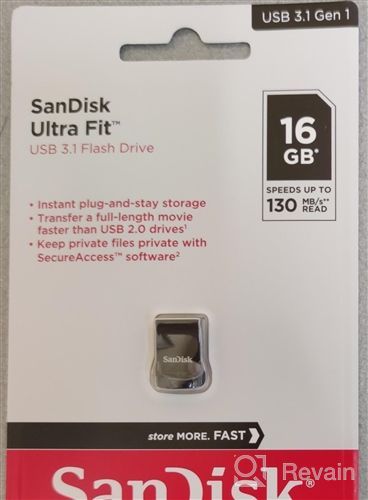
- Low price.
- Didn't find
New products
Comments (0)
Top products in 💾 USB Flash Drives

Titan Gray Samsung BAR Plus 256GB USB 3.1 Flash Drive (MUF-256BE4/AM) with Up to 400MB/s Transfer Speed

69 Review

Samsung BAR Plus 128GB - High-Speed USB 3.1 Flash Drive Titan Gray (MUF-128BE4/AM)

67 Review

Sandisk Ultra Flair 128 GB Silver USB Flash Drive: Reliable and High-Speed Storage

65 Review
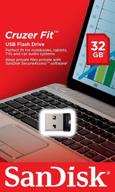
Compact and Convenient: SanDisk Cruzer Fit USB 32GB Flash Drive (SDCZ33-032G-A11)

66 Review
Another interesting products
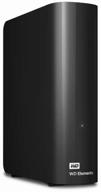
18 TB External HDD Western Digital WD Elements Desktop, USB 3.0, black

95 Review
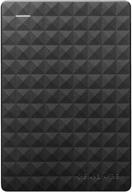
🔌 Seagate Expansion 3TB Portable USB 3.0 External Hard Drive (STEA3000400) in Black

60 Review
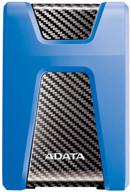
2 TB External HDD ADATA DashDrive Durable HD650, USB 3.2 Gen 1, Blue

55 Review
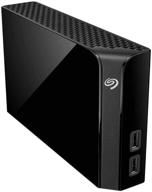
8TB Seagate Backup Plus Hub Desktop Hard Drive with Data Recovery Services

56 Review

